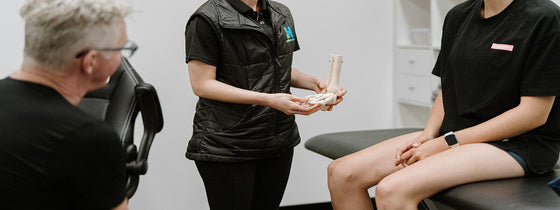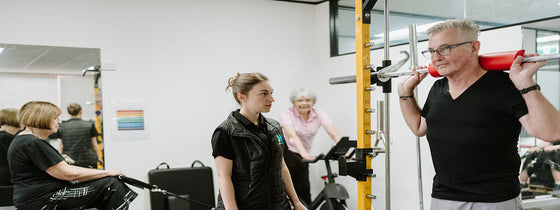With OHL’s ACL Rehab Roadmap Program
Suffering an ACL injury is one of the most dreaded for sportspeople and active populations. An ACL injury will more often than not require surgery to allow the sufferer to return to their chosen sports and activities. The surgery however, is merely the beginning of the journey on the road to recovery and returning to sport.
Unfortunately, the reinjury rates following ACL injury are high, particularly among younger people. Research shows us that 30% of young people who return to sport following an ACL injury will suffer a second injury within two years. This statistic highlights the importance of completing a thorough rehabilitation and ensuring that exercises are done optimally.
Rehabilitation programs following ACL reconstruction are moving away from being solely time based. Whilst we do have to respect tissue healing timeframes, the progression has been towards a more criteria driven approach. This means that rather than waiting for time to pass to progress rehab, exercises are advanced as certain milestones are met. If these specific criteria are reached throughout the rehabilitation process, the likelihood of reinjury is reduced significantly. For example, you can begin the fun phase of strengthening once you have limited pain, no swelling and full knee extension (aka it can straighten fully without pain or swelling).

The evidence is also there to suggest that rehab sessions should be supervised in the first 6 months post surgery. Patients recovering from an ACL reconstruction will demonstrate compensatory movement patterns up to five months post their surgery. This is why it is so crucial to perform exercises under supervision within this important time period, to ensure movements are being done correctly, and the injured limb is being loaded safely. A successful rehabilitation requires exercises not only to be done regularly, but they also need to be performed with correct movement patterns.
This is why here at OHL we have constructed a program specifically for those recovering from ACL surgery. We have called it: ACL – Rehab Roadmap. This program places high value on a holistic assessment process. At the Optimal Health Lab we strongly believe that if you aren’t testing, you’re guessing. The initial examination encompasses strength, balance and motor control aspects to tell us exactly what each individual needs to focus on throughout their rehab programs. Having accurate measures, allows us to prescribe exercises targeted to address the deficiencies that are found. Patients undergo supervised strength session twice weekly for 12 weeks. At the six week mark everything is re-assessed to determine what progress has been made and what we need to continue to work on. This allows accurate, effective and safe exercise prescription to be made.
In this time goals include regaining muscular strength to be the same level as the non-reconstructed leg, optimising single leg balance and being able to control important movements efficiently and safely. These goals are the building blocks we need on the road to returning to running, jumping, hopping & cutting along our pathway back to competitive sport.
You don’t need to be an elite athlete to be involved in this program. Everyone who goes through this injury and subsequent surgery receives the same scientific care through their recovery at OHL, because we want everyone to live their most active lives without restriction.
Please feel free to contact Scott about this program and its unparalleled scientific basis. Scott’s contact email is scott@optimalhealthlab.com.au.

OHL is integrating a new athletic screening assessment into its practice to further enhance our community's sporting ability. This screening assessment combines range of motion, strength profiling, force deck analysis, and subjective training status to give athletes a comprehensive performance snapshot. By establishing a baseline and identifying key areas for improvement, we can tailor your training to enhance performance, provide insight on key metrics, and stay resilient throughout the season. Whether you're preparing for preseason, managing midseason demands, or simply aiming to train smarter, this assessment delivers the data-driven insights you need.

If you're experiencing back or neck pain with neurological signs and symptoms, a thorough neurological examination is crucial for accurate assessment and effective treatment. In this Optimal Tip learn more about what we mean by completing a neurological exam!

Squats, deadlifts, and calf raises are key movement patterns that should be part of every strength and conditioning program—regardless of age and activity level. These functional movements support joint health, improve posture and balance, and reduce the risk of injury while building strength where it matters most.